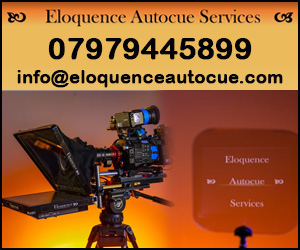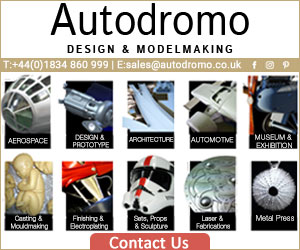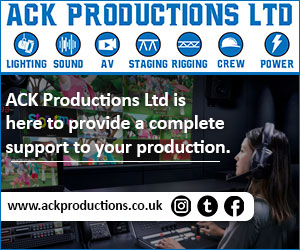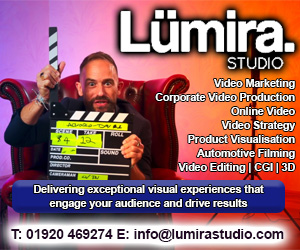Broadcast News
23/10/2019
Questions You Should Ask An Electronic Product Designer

Choosing the right product design partner can be key to your success when building a new electronic product. Here we highlight 10 things that you should consider when selecting a designer to help you develop your product. Some of these questions are subjective, so remember that what is right for one project or client may not be the best fit for another.
Are they an independent design firm or part of a manufacturing company?
Many manufacturing companies also offer design services, but will they always act in your best interests? They may have in-house staff who are excellent designers, or they may outsource your design to an unnamed third party. Either way, you need to be sure that the designer has the creative freedom to choose the best solution for your design, even if it means the company can not manufacture the product themselves. Some manufactures will be honest enough to consider all the options, while others will stick to just what they can manufacture themselves.
What is their relevant experience?
Electronic products take many forms and vary hugely in complexity, from bike lights to surgical robots. A new product design may require a variety of specialist skills such as analog, RF and high-speed digital design, HDI PCB layout, FPGA and real time embedded firmware. In addition, some products must comply with strict regulations, such as automotive, aerospace or medical devices.
Not all design houses will have the right experience to deliver you a successful product design, so it is important to ask your design house how their experience fits with your needs, and how they will manage any shortcomings.
How will the design house communicate?
Communication is one of the most important factors when choosing who you are going to work with. You need to feel comfortable with the designer you choose, particularly if you do not have a technical background. Your design partner should communicate with you frequently and clearly, explaining technical matters in simple language. They should also be good listeners. Great communication is critical to ending up with the product you envision.
You should ask how often and in what manner they communicate with their clients. Do they provide weekly or monthly progress reports? Can you meet in person? Location may be a consideration because meeting in person can help create trust and a clear channel of communication.
Remember that communication goes two ways. This means you also need to be clear about what you want and be able to articulate your product idea and needs in a clear and concise manner. Good designers will work with you to get the information they need but being prepared will make the process smoother.
How will your product idea be protected?
Working with a design firm means sharing your product ideas, in detail, with a third party. Protecting those ideas could be crucial to the success of your new business. Established design houses should have a process in place for protecting their clients IP, including signing a non-disclosure agreement (NDA) early in the process.
The most important thing is to talk to your design firm and find out how that will protect your IP.
Who owns the IP that is generated?
At the end of the design process will you own the intellectual property that is generated or does the design firm retain it? Owning the IP means that the designs are yours to do with as you please. You may also be able to patent parts of the design to help protect your investment. However, if the design house retains the IP then your options are far more limited.
It is important to find out exactly what rights you and the designer have to the designs once they are complete. We would always recommend that you, the client, own the IP and retain copies of all the design files at the end of the project.
What is their product design process?
Established design houses should have a well-documented design process that they can share with their clients. There are many different approaches to product development, depending on the size and complexity of the project and the management style of the design house. While one approach is not necessarily better than another, it is important that you understand the design process up front so you can decide whether it is a good fit for your project and know what to expect as the design progresses. For example, how will progress be measured? What design reviews will be held, and when? How is quality management addressed?
Many companies explain the design process they use on their website, and you can read our full process.
What is the estimated cost and is that good value?
Designing a new electronic product is always a costly undertaking, but you will find a huge range of rates depending on the location and the size of the firm.
Freelance engineers typically charge between £50 to £100 an hour, depending on skillset and experience, with design firms charging somewhat more. It may be tempting to choose the cheapest designer you can find, but this is not always a good idea. A more experienced engineer may save you money in the long run by completing your design more quickly and with fewer errors. Problems identified after the design is complete may cost far more than any savings you make by using an inexperienced designer.
You should also think about what resources the designer has available. Staff, test equipment, and design software all come at a cost, but a better equipped design house may offer better value and a produce better quality design.
How will we be billed?
In most cases your project will be billed on a time and materials basis, so the cost will depend on both rate and how long it takes to complete the project. Your designer should provide you with a detailed break down of the expected costs. In some cases, if the project is simple or very well defined, you may be able to negotiate a fixed price for the work.
Who gets the R&D tax credit?
Designing an electronic product can be expensive, but the UK government offers some tax relief to companies undertaking certain R&D projects. R&D tax credits can make a big difference in the amount of corporation tax you pay, so it is important that you talk to a tax professional and with the design firm you choose about the tax credits. Tax law changes frequently, so it is important to keep up to date. You can check here for current R&D tax laws in the UK.
How long will it take?
Product development often takes longer than people realize and one of the questions we hear all the time is “How can we do it faster?”.
The time it will take to design your product will primarily depend on two factors; the complexity of your idea and the resources that are available.
Your product will likely contain different design elements that can be designed in parallel, for example the electronics, software and housing. On larger projects, it may be possible to divide each of these elements down into smaller work packages which then allows more engineers to work in parallel and speed things up. However, it is important to note that throwing resources at the problem often comes at a cost in terms of increased management and communications effort, and decreased efficiency. Ten engineers will not be twice as fast as five!
Hopefully, these questions can help guide you to finding a product designer that works for you and your product concept. If you would like to learn more about Ripcord Designs and how we can support you with your product concept, please get in touch.
Are they an independent design firm or part of a manufacturing company?
Many manufacturing companies also offer design services, but will they always act in your best interests? They may have in-house staff who are excellent designers, or they may outsource your design to an unnamed third party. Either way, you need to be sure that the designer has the creative freedom to choose the best solution for your design, even if it means the company can not manufacture the product themselves. Some manufactures will be honest enough to consider all the options, while others will stick to just what they can manufacture themselves.
What is their relevant experience?
Electronic products take many forms and vary hugely in complexity, from bike lights to surgical robots. A new product design may require a variety of specialist skills such as analog, RF and high-speed digital design, HDI PCB layout, FPGA and real time embedded firmware. In addition, some products must comply with strict regulations, such as automotive, aerospace or medical devices.
Not all design houses will have the right experience to deliver you a successful product design, so it is important to ask your design house how their experience fits with your needs, and how they will manage any shortcomings.
How will the design house communicate?
Communication is one of the most important factors when choosing who you are going to work with. You need to feel comfortable with the designer you choose, particularly if you do not have a technical background. Your design partner should communicate with you frequently and clearly, explaining technical matters in simple language. They should also be good listeners. Great communication is critical to ending up with the product you envision.
You should ask how often and in what manner they communicate with their clients. Do they provide weekly or monthly progress reports? Can you meet in person? Location may be a consideration because meeting in person can help create trust and a clear channel of communication.
Remember that communication goes two ways. This means you also need to be clear about what you want and be able to articulate your product idea and needs in a clear and concise manner. Good designers will work with you to get the information they need but being prepared will make the process smoother.
How will your product idea be protected?
Working with a design firm means sharing your product ideas, in detail, with a third party. Protecting those ideas could be crucial to the success of your new business. Established design houses should have a process in place for protecting their clients IP, including signing a non-disclosure agreement (NDA) early in the process.
The most important thing is to talk to your design firm and find out how that will protect your IP.
Who owns the IP that is generated?
At the end of the design process will you own the intellectual property that is generated or does the design firm retain it? Owning the IP means that the designs are yours to do with as you please. You may also be able to patent parts of the design to help protect your investment. However, if the design house retains the IP then your options are far more limited.
It is important to find out exactly what rights you and the designer have to the designs once they are complete. We would always recommend that you, the client, own the IP and retain copies of all the design files at the end of the project.
What is their product design process?
Established design houses should have a well-documented design process that they can share with their clients. There are many different approaches to product development, depending on the size and complexity of the project and the management style of the design house. While one approach is not necessarily better than another, it is important that you understand the design process up front so you can decide whether it is a good fit for your project and know what to expect as the design progresses. For example, how will progress be measured? What design reviews will be held, and when? How is quality management addressed?
Many companies explain the design process they use on their website, and you can read our full process.
What is the estimated cost and is that good value?
Designing a new electronic product is always a costly undertaking, but you will find a huge range of rates depending on the location and the size of the firm.
Freelance engineers typically charge between £50 to £100 an hour, depending on skillset and experience, with design firms charging somewhat more. It may be tempting to choose the cheapest designer you can find, but this is not always a good idea. A more experienced engineer may save you money in the long run by completing your design more quickly and with fewer errors. Problems identified after the design is complete may cost far more than any savings you make by using an inexperienced designer.
You should also think about what resources the designer has available. Staff, test equipment, and design software all come at a cost, but a better equipped design house may offer better value and a produce better quality design.
How will we be billed?
In most cases your project will be billed on a time and materials basis, so the cost will depend on both rate and how long it takes to complete the project. Your designer should provide you with a detailed break down of the expected costs. In some cases, if the project is simple or very well defined, you may be able to negotiate a fixed price for the work.
Who gets the R&D tax credit?
Designing an electronic product can be expensive, but the UK government offers some tax relief to companies undertaking certain R&D projects. R&D tax credits can make a big difference in the amount of corporation tax you pay, so it is important that you talk to a tax professional and with the design firm you choose about the tax credits. Tax law changes frequently, so it is important to keep up to date. You can check here for current R&D tax laws in the UK.
How long will it take?
Product development often takes longer than people realize and one of the questions we hear all the time is “How can we do it faster?”.
The time it will take to design your product will primarily depend on two factors; the complexity of your idea and the resources that are available.
Your product will likely contain different design elements that can be designed in parallel, for example the electronics, software and housing. On larger projects, it may be possible to divide each of these elements down into smaller work packages which then allows more engineers to work in parallel and speed things up. However, it is important to note that throwing resources at the problem often comes at a cost in terms of increased management and communications effort, and decreased efficiency. Ten engineers will not be twice as fast as five!
Hopefully, these questions can help guide you to finding a product designer that works for you and your product concept. If you would like to learn more about Ripcord Designs and how we can support you with your product concept, please get in touch.
Top Related Stories
Click here for the latest broadcast news stories.
22/09/2005
Green Design short is a gas at Framestore design
Screening during October 2005, animated short film 'Hydrogen' has been created by Framestore CFC for Coast as part of their 'Green Design' series. Com
Green Design short is a gas at Framestore design
Screening during October 2005, animated short film 'Hydrogen' has been created by Framestore CFC for Coast as part of their 'Green Design' series. Com
09/04/2019
Decimator Design Extends Converter Range With New Product
Decimator Design has introduced a new addition to its existing converter range - the 12G-CROSS. Expanding the versatility of Decimator Design's cross
Decimator Design Extends Converter Range With New Product
Decimator Design has introduced a new addition to its existing converter range - the 12G-CROSS. Expanding the versatility of Decimator Design's cross
23/04/2013
RTW Wins iF Product Design Award
RTW has announced its half 19-inch 20700VID plug-in module version of its TM7 TouchMonitor has won an iF Product Design Award. The iF (International F
RTW Wins iF Product Design Award
RTW has announced its half 19-inch 20700VID plug-in module version of its TM7 TouchMonitor has won an iF Product Design Award. The iF (International F
14/01/2009
ARRI True Blue Fixtures Awarded Top Honours In Product Design
ARRI's newest lighting products, the True Blue line of studio and Tungsten fixtures have garnered the International Forum (IF) Design Award - one of t
ARRI True Blue Fixtures Awarded Top Honours In Product Design
ARRI's newest lighting products, the True Blue line of studio and Tungsten fixtures have garnered the International Forum (IF) Design Award - one of t
20/05/2002
Media 100's content design product wins acclaim
Media 100, a leading provider of advanced media systems, have been recognised with their third 'Best Of Show' award as a result of the successful debu
Media 100's content design product wins acclaim
Media 100, a leading provider of advanced media systems, have been recognised with their third 'Best Of Show' award as a result of the successful debu
19/06/2008
Trantec Releases New Product 2008 Product Catalogue
Trantec, the wireless mic systems designer and manufacturer, has launched its new 2008 product catalogue. This catalogue is their most comprehensive t
Trantec Releases New Product 2008 Product Catalogue
Trantec, the wireless mic systems designer and manufacturer, has launched its new 2008 product catalogue. This catalogue is their most comprehensive t
16/05/2017
AKA Design Completes Abbey Road Studios Project
AKA Design has recently completed an installation project at Abbey Road Studios. The company's technical furniture was selected for the studios' three
AKA Design Completes Abbey Road Studios Project
AKA Design has recently completed an installation project at Abbey Road Studios. The company's technical furniture was selected for the studios' three
23/03/2017
TSL Systems Showcases Project Design Services
TSL Systems has presented its project design services for studio builds at CABSAT 2017, including its recent installation of MBC's new Dubai productio
TSL Systems Showcases Project Design Services
TSL Systems has presented its project design services for studio builds at CABSAT 2017, including its recent installation of MBC's new Dubai productio
12/01/2017
Animation & Motion Design To Bring Your Project Alive
Add quality 2D & 3D animation to any broadcast or commercial project. Full Rotation is a small Animation studio with big buzz. They offer a wide range
Animation & Motion Design To Bring Your Project Alive
Add quality 2D & 3D animation to any broadcast or commercial project. Full Rotation is a small Animation studio with big buzz. They offer a wide range
17/11/2016
AKA Design Secures ITN Productions Project
AKA Design has secured a project for ITN Productions, delivering 10 custom branded edit desks. The desks, which are crafted from oak and leather, and
AKA Design Secures ITN Productions Project
AKA Design has secured a project for ITN Productions, delivering 10 custom branded edit desks. The desks, which are crafted from oak and leather, and
20/08/2007
AKA Design Complete Major Project For MTV Networks In Amsterdam
Studio and broadcast furniture specialist AKA Design has just completed a major project for MTV Networks' new premises in Amsterdam, supplying a total
AKA Design Complete Major Project For MTV Networks In Amsterdam
Studio and broadcast furniture specialist AKA Design has just completed a major project for MTV Networks' new premises in Amsterdam, supplying a total
05/09/2006
Lighting Designer Mark Bailey Joins Hawthorn As Project Manager
Hawthorn has announce that Mark Bailey of Embee lighting has joined the company as a Project Manager. A renowned lighting designer, Mark Bailey, has b
Lighting Designer Mark Bailey Joins Hawthorn As Project Manager
Hawthorn has announce that Mark Bailey of Embee lighting has joined the company as a Project Manager. A renowned lighting designer, Mark Bailey, has b
26/08/2008
Grand Designs 3D Will Allow Consumers To Design Their Own Dream
A 3D visualisation software developer, Eleco and FremantleMedia Enterprises (FME) have announced plans to partner on the production of a range of hom
Grand Designs 3D Will Allow Consumers To Design Their Own Dream
A 3D visualisation software developer, Eleco and FremantleMedia Enterprises (FME) have announced plans to partner on the production of a range of hom
08/08/2008
Quantel Nominated For An IABM Design Awards Candidate
Quantel, a leading developer of content creation and delivery systems across post, broadcast and DI, is delighted to announce that it has been nominat
Quantel Nominated For An IABM Design Awards Candidate
Quantel, a leading developer of content creation and delivery systems across post, broadcast and DI, is delighted to announce that it has been nominat
08/07/2008
PLASA Awards For Innovation Celebrate Design Excellence
Nominations are now open for the prestigious 2008 PLASA Awards for Innovation - the most influential and respected awards in the industry. Created to
PLASA Awards For Innovation Celebrate Design Excellence
Nominations are now open for the prestigious 2008 PLASA Awards for Innovation - the most influential and respected awards in the industry. Created to















